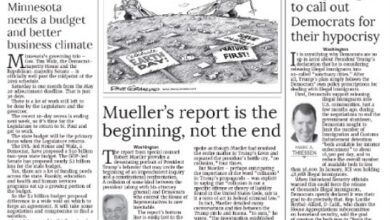What is Dramaturgy Origin Characteristics and Plays
Dramaturgy
Dramaturgy is the art of composing and performing a drama on stage . Although it is linked to the theater , it is also present in the cinema and on television . The writer of these plays is called a playwright .
Origin of Dramaturgy
The word dramaturgy originates from the words drama ( to do ) and ergon ( work ). In Spanish , playwright means the same as in the original Greek: author ( doer ) of works ( of theater ). In English , the word used is playwright , which has the same semantic composition. In German , the word for the playwright is dramatiker ; at least since Lessing, playwright, another German word, is used in the sense of artistic director, a meaning that began to be used when the profession of director was not yet fully established (a fact that occurred towards the end of the 19th century ).
Between 1767 and 1769 , the German Gotthold Ephraim Lessing wrote his reflections on dramatic theory, which are known as the Hamburg Dramaturgy (Hamburgische Dramaturgie). He thus began the prehistory of a profession that in this time has become the must of any theatrical institution that claims to be serious.
Characteristics of Dramaturgy
According to Eugenio Barba, dramaturgy is called a succession of events based on a technique that aims to provide each action with an incident, a change of direction and tension.
Dramaturgy is not linked solely to dramatic literature, nor does it refer only to words or the narrative plot. There is also an organic or dynamic dramaturgy, which orchestrates the rhythms and dynamisms that affect the viewer at a nervous, sensory and sensual level. In this way one could speak of dramaturgy also for those forms of spectacle (whether called dance , mime or theater) that are not tied to the representation or interpretation of stories.
There is then a narrative dramaturgy that links the events and the characters and guides the viewers on the meaning of what they are seeing. This can also unite shapes and figures that do not tell stories but that are spinning variations of images. And there is an organic or dynamic dramaturgy that appeals to a different level of perception of the spectator, that is to say, his kinesthetic sense and his nervous system .
Plays
The dramaturgy works can be written to be represented on stage but can also be adaptations of other works. They are divided into acts that can be fragmented into pictures, which in turn are finally divided into scenes . The extension of each one of the parts of a work can vary according to the will of the playwright . There are works that are constituted by a single act.
A Little History – from Aristotle to Technique of Drama
It all started with a pioneering work in dramatic theory: Aristotle’s “Poetics”, around 335 BC Analyzing theatrical tragedies, the Greek philosopher established relationships between character, action and dialogue, giving examples of what would be good narratives and examining the reactions provoked by the stories in the audience.
Many of these narrative “rules” are referred to today as “Aristotelian drama”, and include concepts such as anagnorisis (when a character discovers essential, hitherto unknown information about himself or another relevant person in the story) and catharsis ( moment that occurs through a great discharge of feelings and emotions). It was Aristotle who also divided theatrical plays into narratives with a beginning, middle and end, always with some conflict and a resolution.
It was not until the 18th century that the term “dramaturgy” was officially used to describe a theory of narrative structure. Author and theorist Gotthold Ephraim Lessing , from the Theater of Hamburg, established the foundation of what would be modern dramaturgy, in view of the actors’ performances and the manipulation of the narrative to reflect the sociocultural scenario and references of the world in which it finds itself. . For him, the playwright was a kind of “dramatic judge”, responsible for understanding the motivations of the characters and for involving the public in the story being told.
From the work of Lessing, other important authors, such as Goethe, Schelling, Thornton Wilder, Arthur Miller and Tennessee Williams, began to reflect on the craft of dramaturgy. In the 19th century, the German writer Gustav Freytag summarized these reflections in the book “The technique of drama”, also establishing a model of narrative structure in five acts (exposure/introduction, rising action, climax, falling action and resolution/ denouement ). Freytag’s ideas served as the basis for what would become today’s screenwriting manuals.
From Stage to Screen
Although the concept of dramatic structure is still closely associated with the theater, it has become popular in television and film as well. This is because the narrative bases are similar, since the different languages share the same structural principles and have the main objective of telling stories.
As the audiovisual arts developed, the concept of a five-act narrative was adapted for the screen and applied – with the necessary adjustments – in movie plots , series and soap operas. Some critics have come to find these adaptations problematic, as Freytag’s original theory was based on Greek tragedies and Shakespearean plays.
However, it is increasingly frequent, in contemporary stories, the use of resources from classical dramaturgy to amplify the narrative impact (often bordering on “melodrama” – an expression that gained pejorative connotations for referring to a type of easy drama).
The fact is that the trajectory of a character who seeks something, but who ends up succumbing due to his limitations, to finally have an epiphany that leads him to overcome obstacles, ended up becoming a recipe for success. The final showdown, better known as the climax, is one of the most awaited moments by most viewers of soap operas, series or movies.



